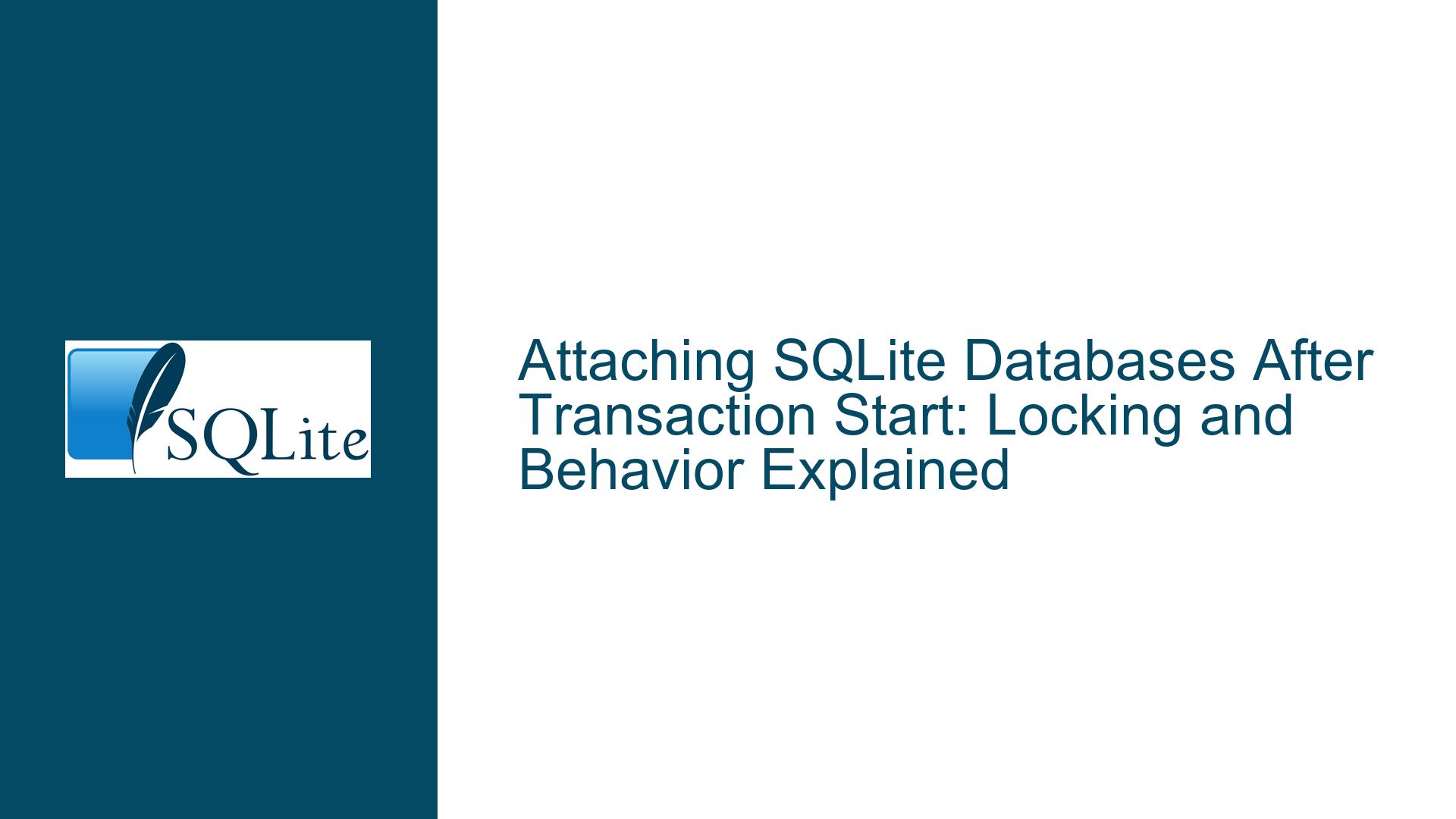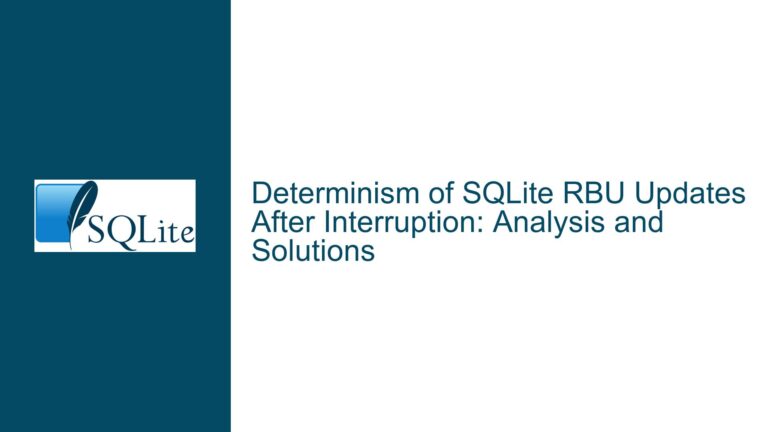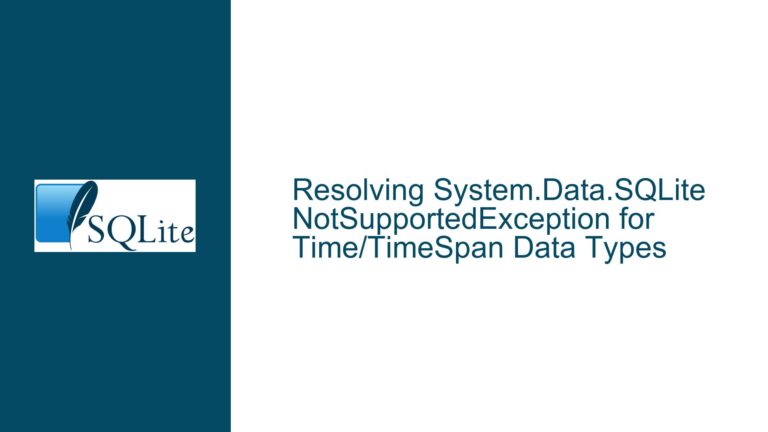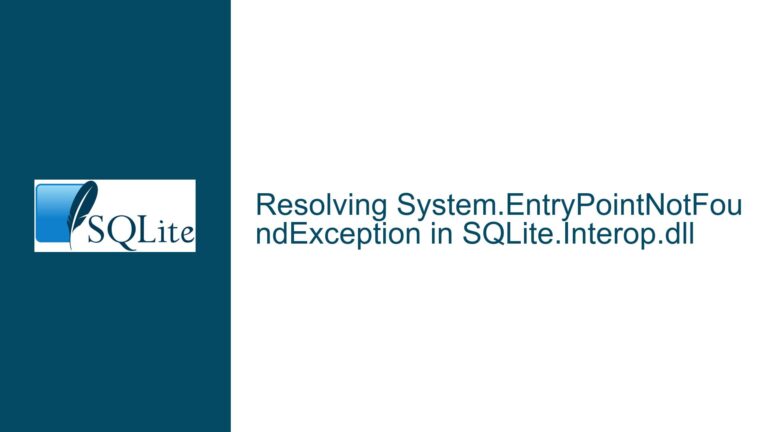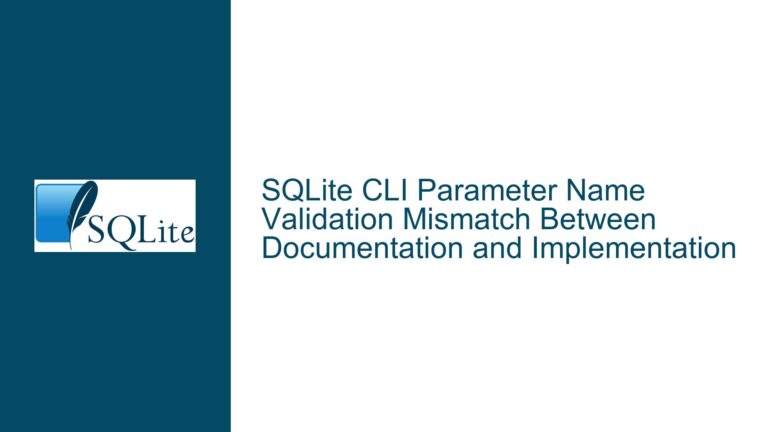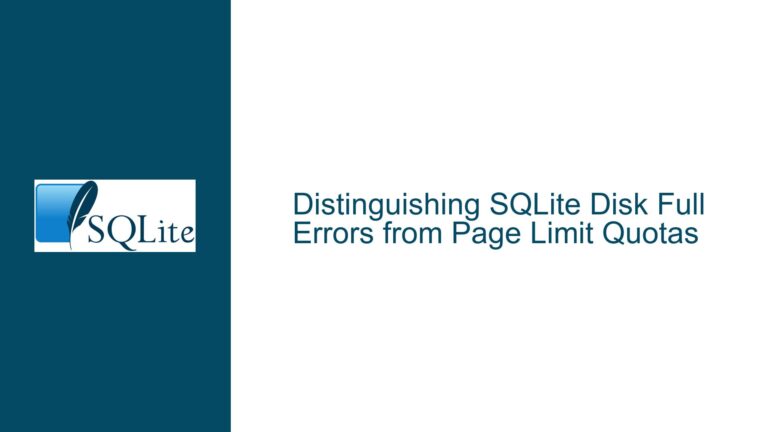Attaching SQLite Databases After Transaction Start: Locking and Behavior Explained
Attaching Databases Mid-Transaction: Locking and Behavior Overview
When working with SQLite in a multi-database environment, particularly in scenarios where data is sharded across multiple databases, a common challenge arises when attempting to attach a database after a transaction has already begun. This situation is further complicated when the attached databases are in different journaling modes, such as JOURNAL and WAL (Write-Ahead Logging). The core issue revolves around understanding the locking behavior and transaction integrity when databases are attached mid-transaction. Specifically, the questions that arise are:
- Can the attach operation fail if the target database is already locked by another transaction?
- What happens when a transaction spans multiple databases, some of which are in JOURNAL mode and others in WAL mode?
- How does SQLite handle locking when a database is attached after a transaction has started?
These questions are critical for developers who design systems that require atomic operations across multiple databases, especially in server environments where transactions are initiated before all participating databases are known. The lack of explicit documentation on these corner cases adds to the complexity, making it essential to explore the behavior in depth.
Interrupted Write Operations and Lock Contention in Multi-Database Transactions
The primary cause of issues when attaching databases mid-transaction stems from SQLite’s locking mechanism and how it manages concurrent access to multiple databases. SQLite employs a file-based locking system to ensure transaction integrity, but this system can lead to contention when multiple processes or connections attempt to access the same database files simultaneously.
When a transaction begins, SQLite acquires locks on all currently attached databases. However, if a new database is attached after the transaction has started, the locking behavior becomes less straightforward. The attach operation itself does not immediately acquire a lock on the newly attached database. Instead, locks are acquired on-demand as statements within the transaction interact with the database. This can lead to scenarios where:
- Process A starts a transaction and attaches Database X.
- Process B starts a transaction and attaches Database Y.
- Both processes then attempt to attach each other’s databases. While the attach operation succeeds, any subsequent write operations may fail due to lock contention.
This behavior is particularly problematic in systems where transactions are long-running or where the set of participating databases is not known at the start of the transaction. Additionally, mixing databases in different journaling modes (JOURNAL and WAL) can introduce further complexity, as each mode has distinct locking and concurrency characteristics.
Implementing PRAGMA journal_mode and Best Practices for Multi-Database Transactions
To address the challenges of attaching databases mid-transaction and ensuring transaction integrity, developers can adopt several strategies and best practices. These include configuring the appropriate journaling mode, understanding SQLite’s locking behavior, and designing systems to minimize lock contention.
Configuring Journaling Modes
The choice of journaling mode significantly impacts how SQLite handles locking and concurrency. The two primary modes are JOURNAL (also known as rollback journal mode) and WAL (Write-Ahead Logging). Each mode has its advantages and trade-offs:
| Journaling Mode | Locking Behavior | Concurrency | Recovery Mechanism |
|---|---|---|---|
| JOURNAL | Coarse-grained locks | Lower concurrency | Rollback journal |
| WAL | Fine-grained locks | Higher concurrency | Write-ahead log |
In JOURNAL mode, SQLite uses a rollback journal to ensure atomicity. When a transaction begins, SQLite acquires a reserved lock on the database file, preventing other writers but allowing readers. If a write operation is attempted on an attached database, SQLite will attempt to upgrade the lock to an exclusive lock, which can lead to contention if another process holds a lock on the same database.
In WAL mode, SQLite uses a write-ahead log to allow readers and writers to operate concurrently. Writers append changes to the WAL, while readers continue to access the main database file. This mode reduces lock contention and improves concurrency, making it a better choice for multi-database transactions.
Best Practices for Multi-Database Transactions
Pre-Attach All Databases: Whenever possible, attach all participating databases before starting the transaction. This ensures that SQLite acquires the necessary locks upfront, reducing the risk of lock contention mid-transaction.
Use WAL Mode for High Concurrency: If your application requires high concurrency and involves multiple databases, consider using WAL mode for all databases. This mode reduces lock contention and allows readers and writers to operate concurrently.
Implement Retry Logic: In scenarios where lock contention is unavoidable, implement retry logic for transactions that fail due to locking issues. This can help mitigate transient lock contention and improve the robustness of your application.
Monitor and Optimize Transaction Scope: Long-running transactions increase the likelihood of lock contention. Monitor the duration of your transactions and optimize them to be as short as possible. This reduces the window of opportunity for lock contention to occur.
Use Separate Connections for Critical Operations: In some cases, it may be beneficial to use separate connections for critical operations that involve multiple databases. This allows you to manage locks more granularly and reduce the risk of contention.
Example Scenario and Solution
Consider a scenario where a server application shards data across multiple databases by project. A transaction may involve multiple projects, but the set of participating databases is not known at the start of the transaction. To handle this, the application can adopt the following approach:
- Begin Transaction: Start the transaction on the primary database.
- Attach Databases: As the transaction progresses and the need to access additional databases arises, attach each database to the connection.
- Configure Journaling Mode: Ensure that all databases are in WAL mode to maximize concurrency and minimize lock contention.
- Handle Lock Contention: Implement retry logic to handle cases where a write operation fails due to lock contention.
By following these best practices, developers can ensure that their applications handle multi-database transactions efficiently and maintain data integrity even in complex scenarios.
Conclusion
Attaching databases mid-transaction in SQLite introduces several challenges related to locking and transaction integrity. By understanding SQLite’s locking behavior, configuring the appropriate journaling mode, and adopting best practices for multi-database transactions, developers can mitigate these challenges and build robust, high-concurrency applications. While the lack of explicit documentation on these corner cases can be a hurdle, the strategies outlined in this guide provide a solid foundation for addressing these issues effectively.
